Background Research
The Fresh Air Compost Collector, designed by Heather Tomasetti and Tal Chitayat, is a smart-looking, new-fangled container for storing your compostable food scraps.
First, for those of you who don’t already participate in the wonderful world of composting: what is it, and why should you do it? In a nutshell (ha-ha, see what I did there?), composting is piling up a lot of waste plant matter–fruit and vegetable peelings, moldy bread, browned avocadoes, raked leaves–in a specific way that makes them decompose in the same manner, but at a faster rate, than they naturally would on their own.
Compost Heap, a 39 Day Time-lapse
Not only does this divert them from the general waste stream and thus the landfill, but “finished” (thoroughly broken-down) compost works magic on plants, not only in an eco-positive way, but also in terms of complex plant science. I tried it, and my plants shot up like they were on steroids.
You’ve probably heard of people keeping worms in bins in their homes in order to compost. But you don’t have to do that. You can just save your scraps and bring them to a compost site run by your community, or a neighbor. However, there’s no getting around the fact that saving compost scraps means keeping them at room temperature for at least a few days if not longer, which can have its unpleasant aspects. The purpose of the Fresh Air Compost Collector is to make them less so.
Time-lapse Fruit and Vegetable Decomposition
See? It’s not necessarily gross. It’s natural, and fascinating to your inner biology nerd.
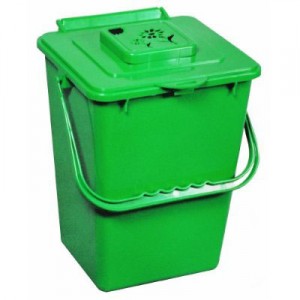
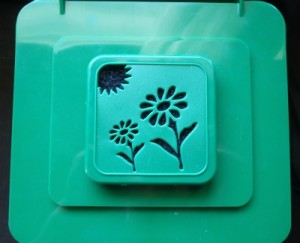
 Most indoor compost collectors either have a lid to prevent odors from escaping, or, like the one I used to have, above, use charcoal filters or other devices to absorb them. (Admittedly, the ventilation-promoting, filter-holding, cut-out flowers on the lid are nicely done.)
Most indoor compost collectors either have a lid to prevent odors from escaping, or, like the one I used to have, above, use charcoal filters or other devices to absorb them. (Admittedly, the ventilation-promoting, filter-holding, cut-out flowers on the lid are nicely done.)
The Fresh Air Compost Collector, on the other hand, is designed to allow air to circulate around the scraps in order to slow down the rot rate. (The inventors refer to “air flumes,” and there are no such things, but calling them that is kind of adorable on their part.) Oxygen can get in and heat and moisture can get out, so your moist, vegetably, fruity leftovers evaporate a bit, preventing “anaerobic” (oxygen-free) breakdown. That’s what causes quick bacteria and mold growth, evil-smelling slime, and the fruit flies it attracts.
Hypothesis
The Fresh Air Compost Collector will allow me to enjoy composting, relatively undefiled by disgusting smells and unwelcome fruit flies.
Experiment
I got my Fresh Air Compost Collector in January and have been using it ever since. To be honest, I didn’t expect it to work all that well, because I usually believe in the tried, true, and un-chic, and this is pretty stylin’ for a waste receptacle.
I was game to try, though, because it was a pain to deal with my old compost pail. With that one, I was never sure if I was supposed to put a bag inside it to collect the scraps, or drop them directly into the naked pail.
If I just put them in the pail, it would soon absorb their collective noxious stink. But plastic bags would never stay upright enough to catch the scraps when I dumped them in (which almost invariably happened when I was cooking and unwilling to stop, open the pail, and hold up the stinky, slimy bag to get the scraps in while somehow keeping it upright so as to not spill its contents). Paper bags disintegrated when wet. And when I pulled the bags out to bring it to the compost pile, they always dripped putrid, decomposing produce juice on me, either then, or on the way there, or when I dumped their contents into the community container.
So, on to the new one: First of all, the design of this container is deceptively simple. You can’t really perceive this until you use it, but it’s very well thought-out in every detail.
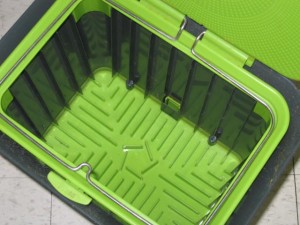
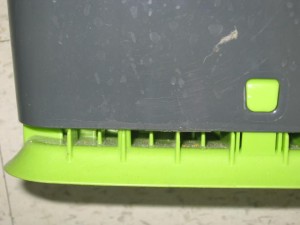
The sides and bottom of the container have ribs that stick out and keep the bag from lying flat against them. Any liquid that might drip evaporates instead of pooling and festering.
The spring-loaded lid, which is full of tiny holes that allow air to circulate but keep out the flies (just like the tin panels of an old-fashioned pie safe), pops open when you press the button, and stays open without having to be held.

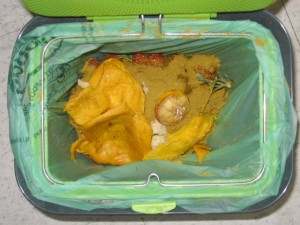
A detachable metal frame keeps the bag upright, so you can toss your scraps into it without getting glop all over yourself. The frame is strong, but light and very easy to lift off and click back into place when you put in a new bag.
One ergonomically crucial factor for me is that, because of where it needs to be stowed in my kitchen, it has to fit under my all-the-way-open dishwasher door, and at 9” tall (and 11.4″ long by 8.5″ wide), it does.
Whether its 1.3-gallon capacity is a good size for you or not depends on how often you eat fresh fruit and vegetables, and how often you’re able to drop off your saved scraps at a compost pile. The one I go to, the North Brooklyn Compost Project, is only open Saturday mornings, so I have to keep my scraps for up to a week (or longer, if I miss the day–see below).
There have been weeks when it was too small for me (I joined a food coop, got overly ambitious, bought too many vegetables, then got busy with other things and most of them went bad in my fridge).
There have been other times when it was too big (my cat died suddenly, I wasn’t up to cooking for a long time, didn’t bother to grocery shop, and put only coffee grounds and the occasional squozed-out lemon in there).
Aaaaand there have been weeks when I missed the compost drop-off day. By “weeks,” I mean “three weeks in a row.” (In my defense, this happened in the middle of winter.) Then it started to smell, though it never got as bad as my old one did.
But those aren’t fair testing conditions; no composter could deliver fume-free service under such circumstances. In general, the Fresh Air Compost Collector performed as promised: it emitted way fewer smells than my old composting pail, and the only time fruit flies were appeared were that one time when I pushed the limits of biology way too far. Even then, I saw only the beginnings of mold.
You’re meant to use compostable liner bags with the Fresh Air Compost Collector, because unlike plastic ones, they “breathe.” Since the bags start biodegrading as soon as you put moist food in them, I was sure they’d break in the container, or on the way to the compost pile. As a precaution–because I don’t like coffee grounds mixed with fermented mango skin and slimy rotten cucumber bits dripping down my legs–I put the bag into a plastic shopping bag for the walk to the compost pile. But it was never actually necessary, even after three weeks. None of the bags has broken yet. Still, I recommend holding the bottom of the bag in such a way that it won’t tear when you pick it up. The speed with which they (and everything in them) break down increases as the temperature gets warmer.
The container can easily be taken apart and put in the dishwasher, though the one time I needed to wash mine (following the three-week-no-compost-pile era), I did it by hand.
Tip: Don’t buy the wrong type/size of bags like I did once, duh. Doggie bags! Rusty Marmalade (RIP) was so disappointed in me.
Conclusion
I’m impressed with this doohickey. The Compost-Scrap-Saving Experience no longer means mess, stink and flies. As all three of those are greatly disliked by humans, no wonder the Fresh Air Compost Collector won a 2012 Green House Design Award. Six months in, I’m still happy with it, and am looking forward to filling it with the remains of this summer’s delicious fruits and vegetables.


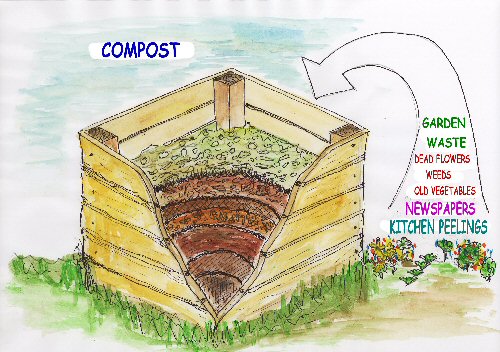

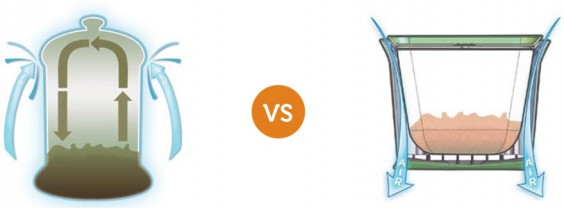
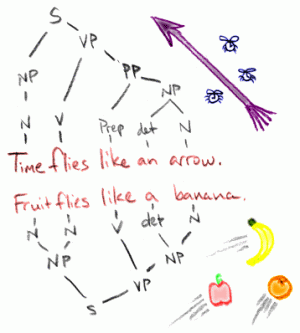
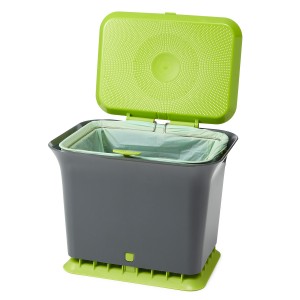
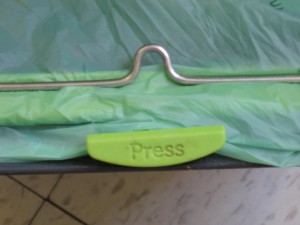

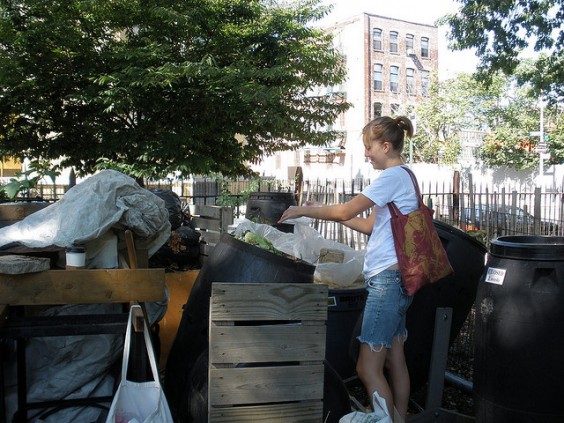


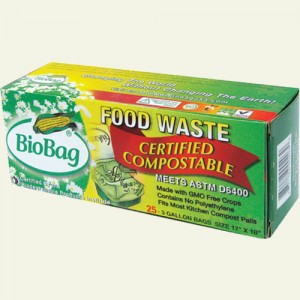
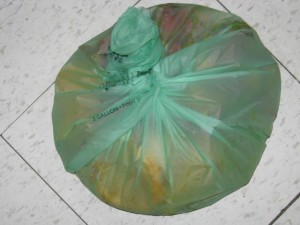
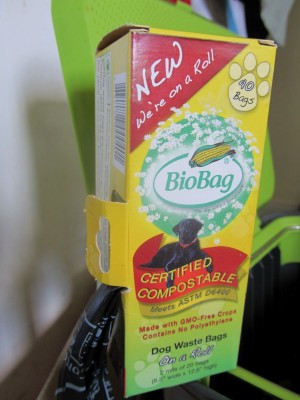
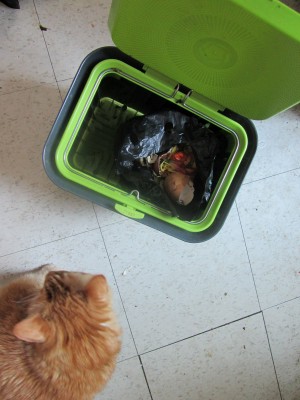
1 Comment
I’d like to use some of your images to teach kids about composting.